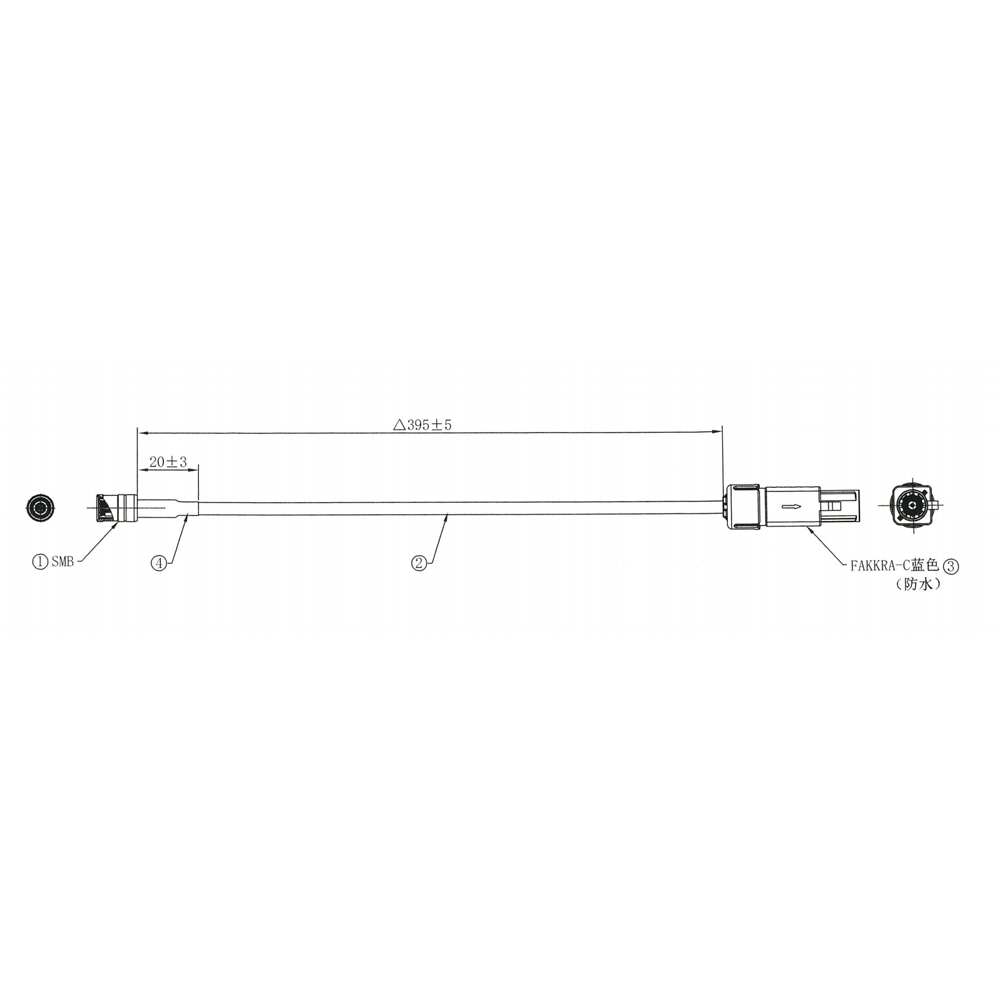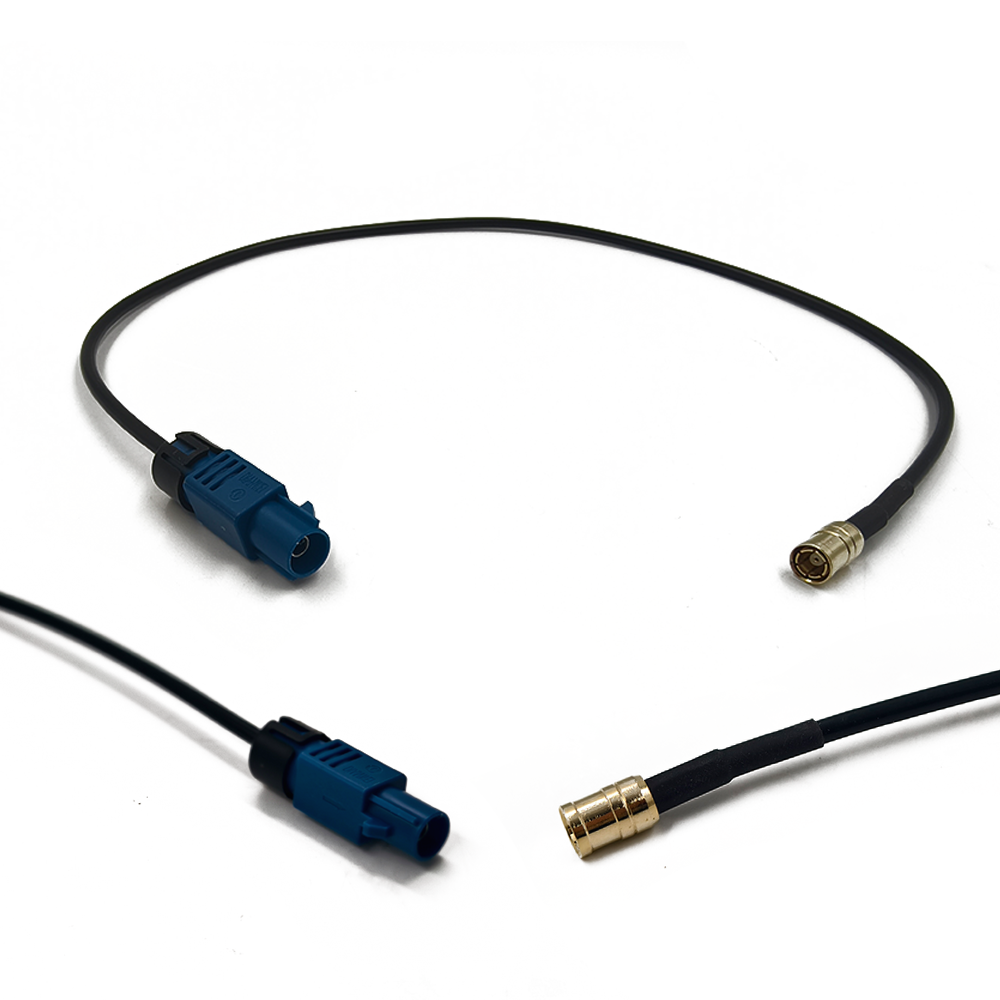Overview
1.1 Market Evolution and Demand Drivers
The automotive GNSS antenna market has grown rapidly, driven by:
Autonomous Vehicle Development: Level 3+ autonomous systems require sub-50 cm accuracy for safe navigation.
Regulatory Compliance: Mandates like the EU’s eCall system and NHTSA’s V2V communication standards demand precise geolocation.
ADAS Proliferation: Lane-keeping assist, adaptive cruise control, and automated parking rely on GNSS for reliable positioning.
Connectivity Trends: 5G-V2X (Vehicle-to-Everything) integration necessitates high-precision timing and synchronization.
Key Market Players:
u-blox: Offers the NEO-M8P (RTK-capable) and ZED-F9P (multi-band) GNSS modules.
Trimble: Specializes in BX992 automotive-grade RTK receivers with integrated antennas.
Taoglas: Provides the EDGE L.P. low-profile antenna for autonomous shuttles.
Antcom: Develops G8 series antennas with anti-jamming capabilities for military and commercial fleets.
1.2 Core Benefits of High-Accuracy GNSS Antennas
Centimeter-Level Precision: Enables lane-level navigation and HD map alignment.
Multi-Constellation Support: Combines GPS, GLONASS, Galileo, and BeiDou for global coverage.
Multi-Frequency Reception: L1/L2/L5 bands mitigate ionospheric delays and urban multipath.
Real-Time Kinematic (RTK) Corrections: Achieves <2 cm accuracy when paired with a base station.
Robustness in Challenging Environments: Advanced filtering rejects interference from bridges, tunnels, and urban canyons.
Design and Construction
High-accuracy automotive GNSS antennas are engineered to balance performance, durability, and aerodynamic efficiency while operating in harsh automotive environments.
2.1 Key Components
Ceramic Patch Antenna:
Material: High-dielectric-constant (high-εr) zirconia-titania composites (εr = 9–15) for miniaturization.
Geometry: Dual-layer stacked patches enable multi-band operation (e.g., L1/L2 or L1/L5).
Feeding Mechanism: Multi-feed points (e.g., quadrature feeds) ensure circular polarization (RHCP) and low axial ratio (<3 dB).
Low-Noise Amplifier (LNA):
Gain: 25–35 dB to boost weak signals (-130 dBm) to usable levels (-95 dBm).
Noise Figure: <1.2 dB to maintain SNR >45 dB for reliable RTK fixes.
Linearity: IP3 > +30 dBm to suppress intermodulation distortion from nearby cellular/LTE signals.
Ground Plane Optimization:
Material: Aluminum alloy (6061-T6) or carbon fiber for lightweight rigidity.
Shape: Circular or square PCBs (12–20 cm diameter) to minimize multipath interference.
Testing: Ground planes are validated in anechoic chambers to ensure <±1 mm phase center stability.
EMI Shielding:
Ferrite Beads: Suppress noise from vehicle power systems (12–48 V DC).
Conformal Coating: Protects against moisture, dust, and vibration (IP67/IP69K ratings).
Anti-Jamming Features:
Controlled Reception Pattern Antennas (CRPA): Use multiple elements to nullify interference sources.
Adaptive Filtering: Digital signal processing (DSP) rejects spoofing attempts and narrowband interference.
2.2 Manufacturing Process
Ceramic Sintering:
Zirconia powder is pressed into molds and fired at 1,400°C to achieve 99% density.
Metallization:
Silver paste is screen-printed and cured at 850°C for high conductivity (σ > 5×10⁷ S/m).
LNA Integration:
Surface-mount technology (SMT) attaches the LNA to the ceramic patch with <0.05 mm alignment tolerance.
Environmental Testing:
Vibration: Simulates vehicle operation (5–2,000 Hz, 20 G peak).
Thermal Cycling: Validates performance from -40°C to +105°C (automotive grade AEC-Q100).
Salt Fog: Tests corrosion resistance for 500+ hours (ASTM B117).
2.3 Automotive vs. Aerospace Antenna Differences
Parameter Automotive Antennas Aerospace Antennas
Weight 15–50 g 50–200 g
Size 30×30 mm to 80×80 mm 100×100 mm to 200×200 mm
Ground Plane Vehicle roof or shark-fin mount Aircraft fuselage or wing
Vibration Resistance 5–2,000 Hz, 20 G 5–500 Hz, 10 G
Thermal Range -40°C to +105°C -55°C to +125°C
Working Principles
High-accuracy automotive GNSS antennas achieve precision through a combination of advanced signal reception, real-time corrections, and sophisticated processing algorithms.
3.1 Signal Reception Mechanism
Satellite Signals:
GPS L1 (1575.42 MHz), L2 (1227.6 MHz), and L5 (1176.45 MHz) are transmitted with right-hand circular polarization (RHCP).
GLONASS (G1/G2), Galileo (E1/E5a/E5b), and BeiDou (B1/B2/B3) signals are similarly encoded for global compatibility.
Antenna Resonance:
The ceramic patch resonates at target frequencies, converting electromagnetic waves into electrical signals.
Example: A 25×25 mm patch on εr=12.5 ceramic resonates at L1 (1575.42 MHz) with a bandwidth of ±2.5 MHz.
LNA Boosting:
Weak signals (-130 dBm) are amplified to -95 dBm, improving SNR for RTK processing.
3.2 RTK Correction Workflow
Base Station Setup:
A ground-based RTK base station (e.g., Trimble R10) transmits correction data (carrier phase and pseudorange) to the vehicle via LTE or dedicated short-range communication (DSRC).
Rover Antenna Reception:
The vehicle’s GNSS antenna receives both satellite signals and base station corrections.
Real-Time Processing:
The onboard GNSS receiver (e.g., u-blox ZED-F9P) solves for integer ambiguities to achieve centimeter-level accuracy.
3.3 Multi-Path Mitigation
Choke Rings: Surround the patch to suppress ground reflections.
Spatial Diversity: Dual antennas (e.g., NovAtel PINNACLE) improve heading accuracy in dynamic driving scenarios.
Advanced Algorithms:
Least-Squares Adjustment: Refines position estimates by minimizing residual errors.
Kalman Filtering: Fuses GNSS data with IMU, odometer, and wheel-speed sensors for dead reckoning in GNSS-denied environments.
3.4 Anti-Spoofing and Anti-Jamming
Cryptographic Signatures: Galileo E6 and BeiDou B3I signals include authentication codes to prevent spoofing.
Adaptive Null Steering: CRPA antennas dynamically adjust radiation patterns to nullify interference sources.
Advantages and Challenges
-
4.1 Advantages
Precision: Enables lane-level navigation and HD map alignment for autonomous vehicles.
Reliability: Multi-constellation support ensures global coverage even in urban canyons.
Scalability: Supports V2X applications like platooning and intersection management.
Cost-Efficiency: RTK corrections via LTE reduce the need for expensive local base stations.
4.2 Challenges
Cost: High-accuracy GNSS antennas cost 5–10× more than standard automotive antennas.
Base Station Dependency: RTK requires line-of-sight to a base station within 20 km (or NTRIP corrections via cellular).
Signal Obstruction: Tunnels, parking garages, and dense foliage degrade accuracy to meter-level.
Thermal Management: LNAs generate heat, necessitating heatsinks in compact designs.
Cybersecurity Risks: GNSS spoofing attacks can mislead autonomous vehicles, requiring encryption and authentication.
Applications and Future Trends
-
5.1 Current Applications
Autonomous Driving:
Waymo’s self-driving taxis use high-accuracy GNSS for lane-keeping and intersection navigation.
ADAS:
Tesla’s Autopilot and GM’s Super Cruise rely on GNSS for highway driving assistance.
Fleet Management:
Uber Freight tracks trucks with <10 cm accuracy for optimized routing.
Precision Agriculture:
John Deere’s autonomous tractors use RTK GNSS for sub-inch planting accuracy.
5.2 Future Trends
5G + GNSS Convergence:
Co-designed antennas will support joint 5G NR and GNSS operation for low-latency V2X communication.
AI-Powered Positioning:
Neural networks will fuse GNSS, LiDAR, and camera data for GNSS-denied navigation.
Flexible Ceramics:
Printable ceramic inks will enable antennas to conform to vehicle roofs and spoilers.
Quantum GNSS:
Post-quantum cryptography will secure RTK signals against future hacking threats.
Solid-State LNAs:
Gallium nitride (GaN)-based LNAs will improve efficiency and thermal stability.
Conclusion
High-accuracy automotive GNSS navigation antennas are revolutionizing the automotive industry by enabling centimeter-level positioning for autonomous driving, ADAS, and V2X applications. Their adoption is driven by the need for safety, efficiency, and regulatory compliance in an increasingly connected world. While challenges like cost, base station dependency, and cybersecurity persist, ongoing innovations in multi-constellation support, AI-powered positioning, and flexible ceramics promise to overcome these barriers.
As the autonomous vehicle market grows at a CAGR of 39.5% through 2030, high-accuracy GNSS antennas will remain at the forefront of this transformation, ensuring safer, more efficient, and more scalable transportation systems worldwide.




































































 Language
Language
 En
En Cn
Cn Korean
Korean

 Home >
Home > 







 18665803017 (Macro)
18665803017 (Macro)













